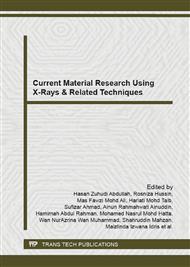[1]
M. Songolzadeh, M.T. Ravanchi and M. Soleimani, Carbon Dioxide Capture and Storage: A GeneralReview on Adsorbents, World Academy of Science, Eng. and Tech. 70 (2012).
Google Scholar
[2]
S.Y. Lin, K. Takashi, Y. Wang and N. Katsuhiro, Energy analysis of CaCO3 calcination with CO2 capture, Energy Procedia. 4 (2011) 356-361.
DOI: 10.1016/j.egypro.2011.01.062
Google Scholar
[3]
J.C. Abanades, The maximum capture efficiency of CO2 using a carbonation/calcination cycle of CaO/CaCO3, Chem. Eng. J. 90 (2002) 303-306.
DOI: 10.1016/s1385-8947(02)00126-2
Google Scholar
[4]
C.L. Soo, M.K. Yong, J.C. Ho, Y.J. Suk, B.L. Joong, K.R. Chong, K.Y. Chang and C.K. Jae, Improving regeneration properties of potassium-based alumina sorbents for carbon dioxide capture from flue gas, Fuel, 104 (2013) 882-885.
DOI: 10.1016/j.fuel.2012.05.037
Google Scholar
[5]
M. Bhagiyalakshmi, Y.L. Ji and T.J. Hyun, Synthesis of mesoporous magnesium oxide: Its application to CO2 chemisorption, Int. J. of Greenhouse Gas Ctrl. 4 (2010) 51-56.
DOI: 10.1016/j.ijggc.2009.08.001
Google Scholar
[6]
Kondakindi, G. McCumber, S. Aleksic, W. Whittenberger and M.A. Abraham, Na2CO3-based sorbents coated on metal foil: CO2 capture performance, Int. J. of Greenhouse Gas Ctrl, 15 (2013) 65-69.
DOI: 10.1016/j.ijggc.2013.01.038
Google Scholar
[7]
J. Daintith: The Facts on File Dictionary of Chemistry, Fourth Ed., Facts on File Inc, New York, 2005.
Google Scholar
[8]
W.J. Son, J.S. Choi and W.S. Ahn, Adsorptive removal of carbon dioxide using polyethyleneimine-loaded mesoporous silica materials, Microporous and Mesoporous Materials. 113 (2008) 31–40.
DOI: 10.1016/j.micromeso.2007.10.049
Google Scholar
[9]
D.I. Jang and S.J. Park, Influence of nickel oxide on carbon dioxide adsorption behaviors of activated carbons, Fuel. 102 (2012) 439-444.
DOI: 10.1016/j.fuel.2012.03.052
Google Scholar
[10]
E. Mikuli, A. Migdal-Mikuli, R. Chhyzy, B. Grad and R. Dziembaj, Melting and thermal decomposition of [Ni(H2O)6](NO3)2, Thermochemica Acta. 370 (2001) 65-71.
DOI: 10.1016/s0040-6031(00)00770-x
Google Scholar
[11]
S. Tanuma, V. Palnichenko' and N. Satoh, Synthesis of low density carbon crystals by quenching gaseous carbon and intercalation of alkali metal atoms into these crystals, Synthetic Metals. 71 (1995) 1841-1844.
DOI: 10.1016/0379-6779(94)03075-h
Google Scholar
[12]
A.V. Palnichenkot and S.Tanumas, Effect of intercalation of alkali and halogen species into the low density carbon crystal 'carbolite', J. Phys. Chem Solids. 57 Nos 6-8 (1996) 1163-l 166.
DOI: 10.1016/0022-3697(95)00416-5
Google Scholar


